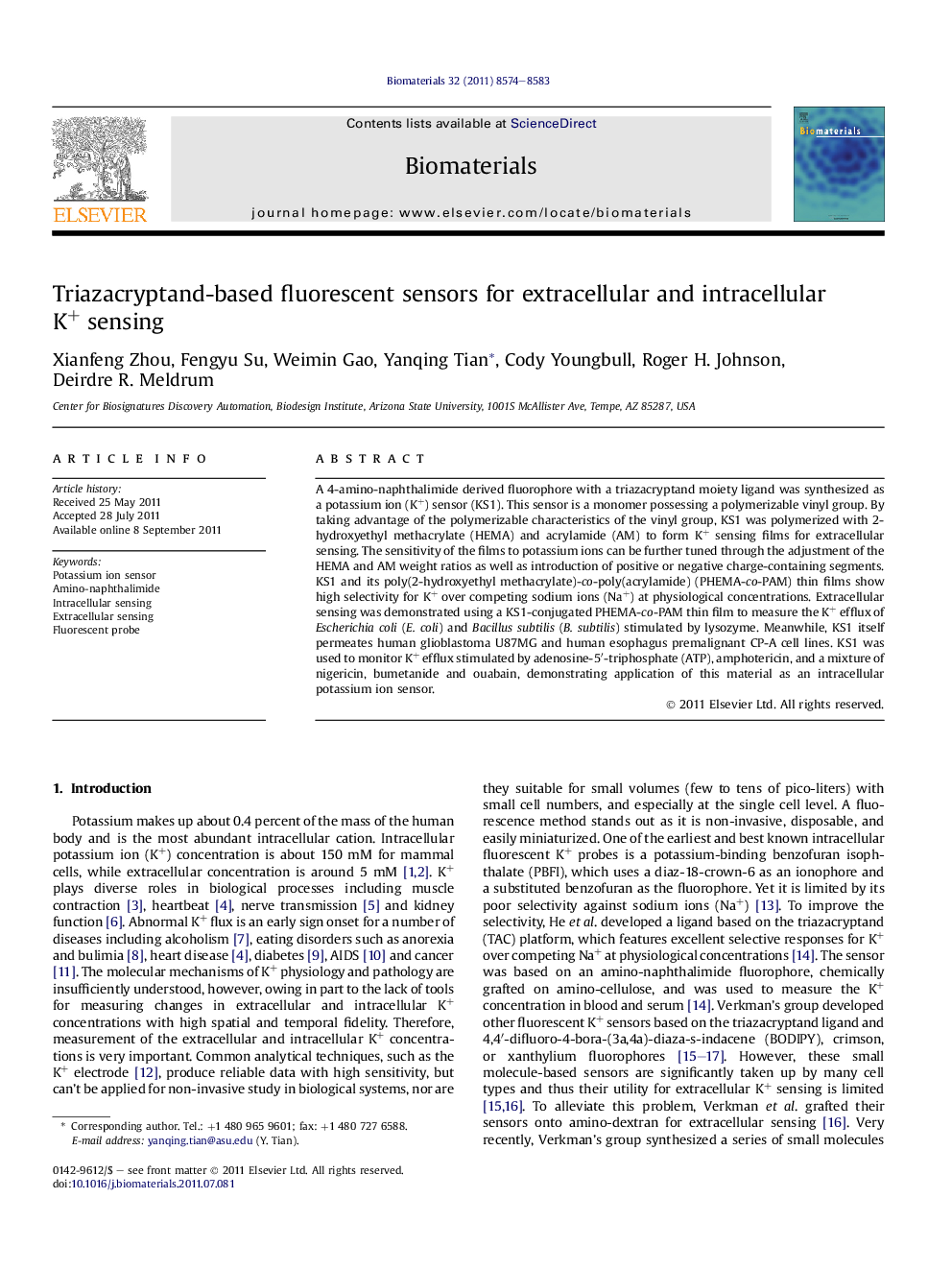| Article ID | Journal | Published Year | Pages | File Type |
|---|---|---|---|---|
| 7249 | Biomaterials | 2011 | 10 Pages |
A 4-amino-naphthalimide derived fluorophore with a triazacryptand moiety ligand was synthesized as a potassium ion (K+) sensor (KS1). This sensor is a monomer possessing a polymerizable vinyl group. By taking advantage of the polymerizable characteristics of the vinyl group, KS1 was polymerized with 2-hydroxyethyl methacrylate (HEMA) and acrylamide (AM) to form K+ sensing films for extracellular sensing. The sensitivity of the films to potassium ions can be further tuned through the adjustment of the HEMA and AM weight ratios as well as introduction of positive or negative charge-containing segments. KS1 and its poly(2-hydroxyethyl methacrylate)-co-poly(acrylamide) (PHEMA-co-PAM) thin films show high selectivity for K+ over competing sodium ions (Na+) at physiological concentrations. Extracellular sensing was demonstrated using a KS1-conjugated PHEMA-co-PAM thin film to measure the K+ efflux of Escherichia coli (E. coli) and Bacillus subtilis (B. subtilis) stimulated by lysozyme. Meanwhile, KS1 itself permeates human glioblastoma U87MG and human esophagus premalignant CP-A cell lines. KS1 was used to monitor K+ efflux stimulated by adenosine-5′-triphosphate (ATP), amphotericin, and a mixture of nigericin, bumetanide and ouabain, demonstrating application of this material as an intracellular potassium ion sensor.
